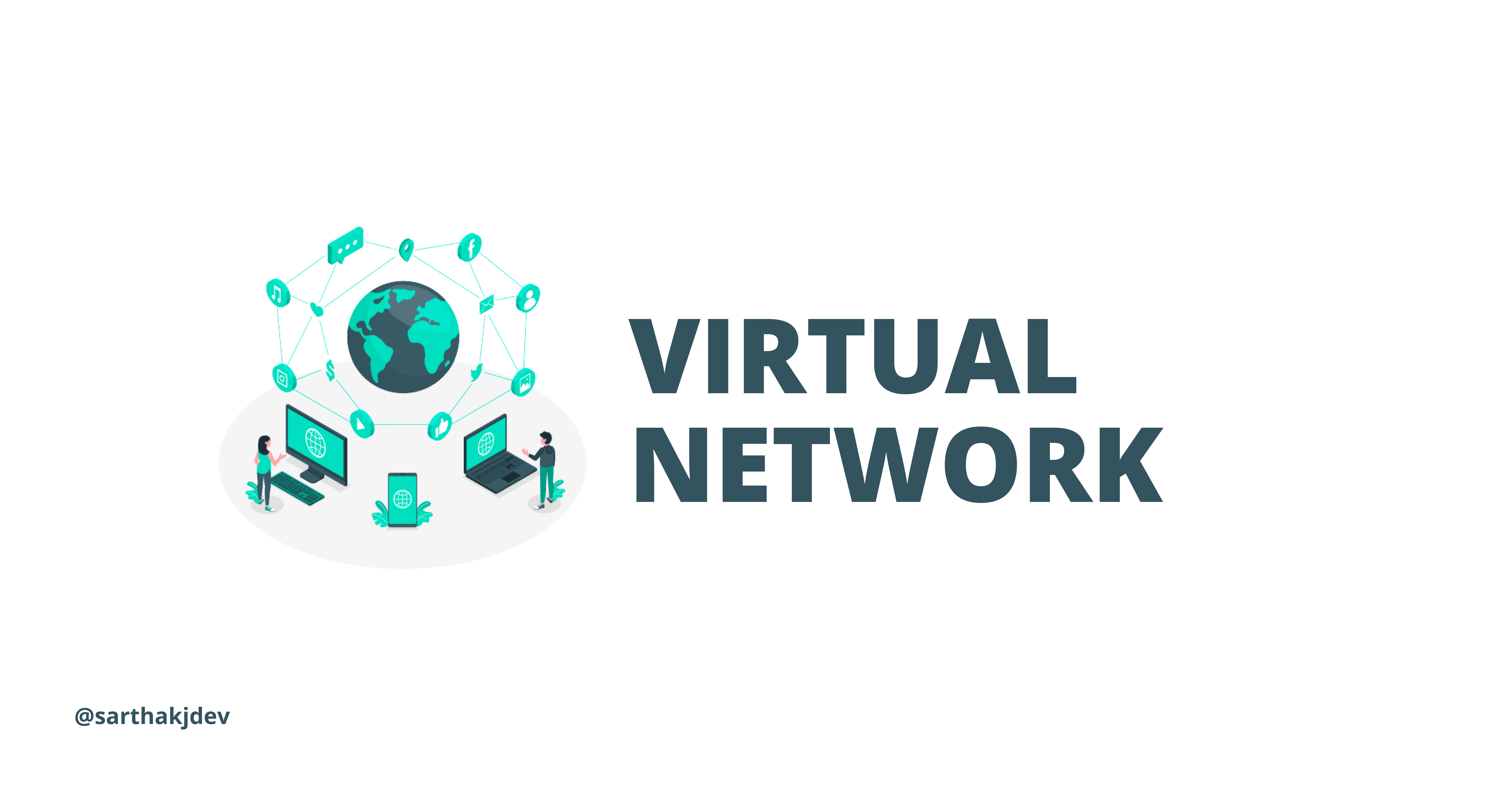Understanding Virtual Networks
 Sarthak Jain
Sarthak Jain
Introduction
Virtual networks have become an integral part of the modern IT landscape. From cloud platforms to IoT devices, the understanding and implementation of these networks determine how secure, efficient, and scalable your software solutions are. In this comprehensive guide, we'll dive deep into virtual networks, their key components, and how to leverage them effectively.
What is a Virtual Network?
A virtual network, often referred to as a VNet, is a software-based network that facilitates communication among various connected devices. Unlike traditional physical networks, VNets provide flexibility, ease of management, and advanced configurations tailored to specific use cases.
Why Use Virtual Networks?
Isolation and Segmentation: By segregating resources, you can better manage and protect your data.
Flexibility and Scalability: VNets can easily scale up or down based on the demand.
Cost-Efficiency: Eliminates the need for extensive physical hardware.
Components of a Virtual Network
Subnet: A smaller, manageable segment of the VNet.
Network Interface Card (NIC): A virtual NIC to connect VMs within the VNet.
Network Security Group (NSG): Defines the inbound and outbound rules for network traffic.
Setting Up a Virtual Network with AWS SDK v3
// Import required AWS SDK clients and commands
const { EC2Client, CreateVpcCommand } = require("@aws-sdk/client-ec2");
const client = new EC2Client({ region: "us-west-1" });
// Create a VPC with the desired CIDR block
const createVpc = async () => {
try {
const command = new CreateVpcCommand({ CidrBlock: "10.0.0.0/16" });
const response = await client.send(command);
return response.Vpc.VpcId;
} catch (error) {
console.error("Error creating VPC:", error);
}
};
createVpc().then(console.log);
In the above code, we initialize an EC2 client for the AWS SDK and define a method to create a VPC.
Use Cases for Virtual Networks
Hybrid Cloud Deployments: VNets bridge the gap between on-premises infrastructure and cloud resources.
IoT Devices Integration: VNets help manage communication between myriad IoT devices securely.
Multi-Tier Applications: By using VNets, one can segregate the application, database, and caching layers efficiently.
Virtual Network vs. Physical Network
| Criteria | Virtual Network | Physical Network |
| Flexibility | High (Software-defined) | Limited by hardware |
| Cost | Variable, often lower | High initial cost |
| Scalability | Easy to scale | Requires hardware change |
| Maintenance | Software updates | Hardware maintenance |
Conclusion
Virtual Networks play a pivotal role in the evolution of IT infrastructure. Their inherent flexibility, scalability, and security make them an ideal choice for businesses striving for agile and efficient operations. As the realm of digital transformation continues to expand, mastering virtual networking becomes indispensable for developers and network administrators alike.
References
FAQs
What is the main advantage of virtual networks over physical ones?
- Flexibility and the ability to quickly adapt to changing requirements without significant infrastructure changes.
Can a virtual network span multiple physical locations?
- Yes, through hybrid cloud configurations and VPN connections, a VNet can span multiple geographical locations.
Is there a performance difference between VNets and traditional networks?
- VNets might introduce a minimal latency due to virtualization, but the difference is often negligible for most applications.
Subscribe to my newsletter
Read articles from Sarthak Jain directly inside your inbox. Subscribe to the newsletter, and don't miss out.
Written by

Sarthak Jain
Sarthak Jain
Hello, I'm a freelancer specializing in Node.js (Typescript) and React development, backed by strong DevOps expertise. I'm here to transform your ideas into real technological solutions, so feel free to reach out via DMs. My passion lies in various aspects of the development process, including setting up development environments, creating deployment pipelines, and constructing cloud infrastructures. Feel free to get in touch, and let's discuss how I can help bring your projects to life!